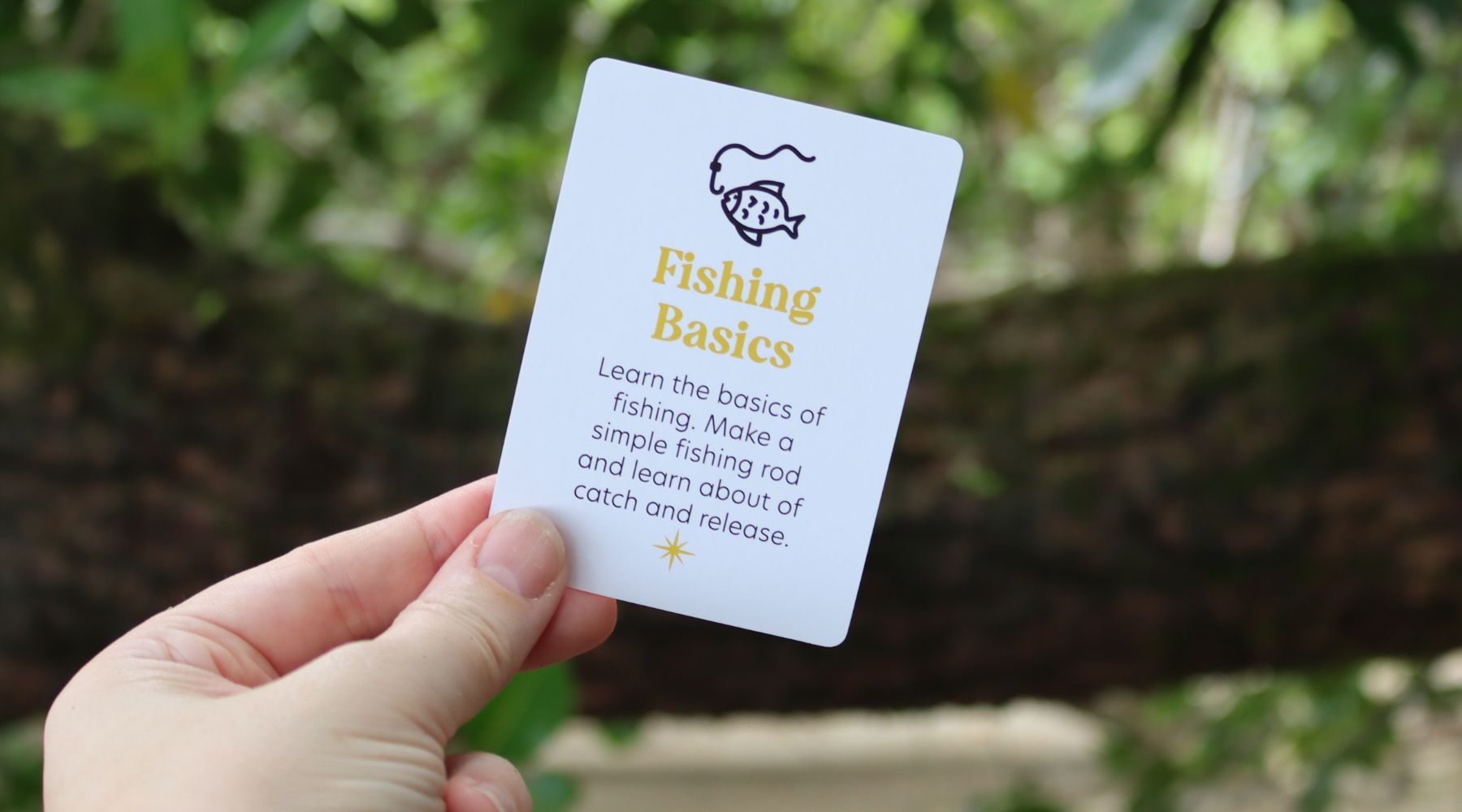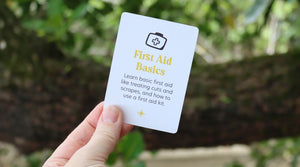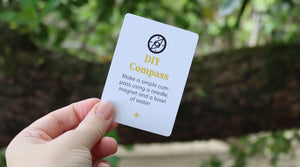Fishing is a great way to connect with nature, develop patience, and learn new skills. Whether you’re by a pond, river, or beach, it’s a fun and peaceful activity that also teaches responsibility toward wildlife. In this blog, we’ll cover the basics of fishing, show you how to make a simple fishing rod and discuss the importance of catch and release.
Why Learn to Fish?
Fishing teaches important outdoor skills, like understanding the water and how to be patient. It’s also a great way to spend time outside with friends or family, enjoying nature.
Materials You’ll Need to Make a Simple Fishing Rod:
- A sturdy stick (about the length of your arm)
- Fishing line or strong string (about 2-3 meters long)
- A hook (you can buy one or make one from a bent safety pin)
- Small weights (optional, to help the hook sink)
- Bait (worms, bread, or small pieces of food)
- Scissors or a knife (to cut the string)
How to Make Your Simple Fishing Rod
1. Find a Sturdy Stick
Search for a straight, sturdy stick that’s about the length of your arm. This will be the base of your fishing rod.
2. Attach the Fishing Line
Tie one end of the fishing line or strong string securely to the end of your stick. Make sure it’s tied tightly so it doesn’t come loose when you catch a fish. The line should be about 2-3 meters long, depending on the size of the water you’re fishing in.
3. Add the Hook
If you have a store-bought hook, tie it to the end of your fishing line. If you’re using a safety pin, bend it into the shape of a hook and attach it to the line. Be careful with the sharp end!
4. Add a Weight (Optional)
If you have small weights, tie one a few centimetres above the hook. This helps the bait sink into the water where the fish are swimming.
5. Bait Your Hook
Use small pieces of bait like worms, bread, or insects. Hook the bait securely so it stays on when you cast your line into the water.
Basic Fishing Techniques
1. Cast Your Line
Find a spot near the water where you can gently cast your line. Hold the stick in one hand, and swing the baited hook into the water. Keep the line loose but ready to pull when you feel a tug.
2. Wait Patiently
Fishing takes patience. Sit quietly by the water and wait for a fish to bite. Fish are often scared by loud noises or sudden movements, so try to stay still and enjoy the peaceful environment.
3. Feel for a Bite
When a fish bites, you’ll feel a small tug on the line. Gently pull the line up to set the hook in the fish’s mouth. Don’t yank too hard or you might lose the fish.
4. Reel In Your Catch
Once you feel a strong tug, slowly pull the line toward you, lifting the fish out of the water. Be careful not to let the line snap!
The Importance of Catch and Release
Catch and release is an important practice for responsible fishing. It means catching a fish, enjoying the excitement, and then releasing it back into the water unharmed. This ensures fish populations stay healthy and allows others to enjoy fishing in the future.
How to Practice Catch and Release:
- Handle the fish gently: Wet your hands before touching the fish to avoid damaging its delicate skin.
- Remove the hook carefully: Use pliers or your fingers to gently remove the hook. If the hook is deeply embedded, cut the line as close to the hook as possible to avoid injuring the fish.
- Release the fish quickly: Place the fish back in the water and let it swim away on its own. If the fish looks tired, gently hold it in the water until it regains strength and swims off.
Tips for a Great Fishing Experience
- Know the Rules: Check local fishing regulations to ensure you’re fishing in permitted areas and know the catch limits for certain fish species.
- Choose the Right Time: Fish are usually more active early in the morning or in the evening when it’s cooler.
- Use the Right Bait: Different fish prefer different types of bait. Worms, bread, and insects work for many freshwater fish, while sea fishing might require different bait like squid or prawns.
- Be Respectful of Nature: Always clean up after yourself and leave the fishing spot as you found it. Respect the wildlife and the environment around you.
Fishing Is About More Than Just Catching Fish
Fishing is a wonderful way to relax, appreciate nature, and learn about the world around you. Whether you catch something or not, the experience of being outdoors and trying a new skill is what makes it fun.



